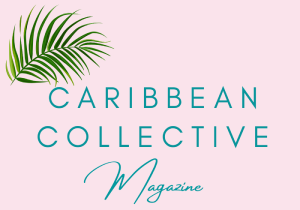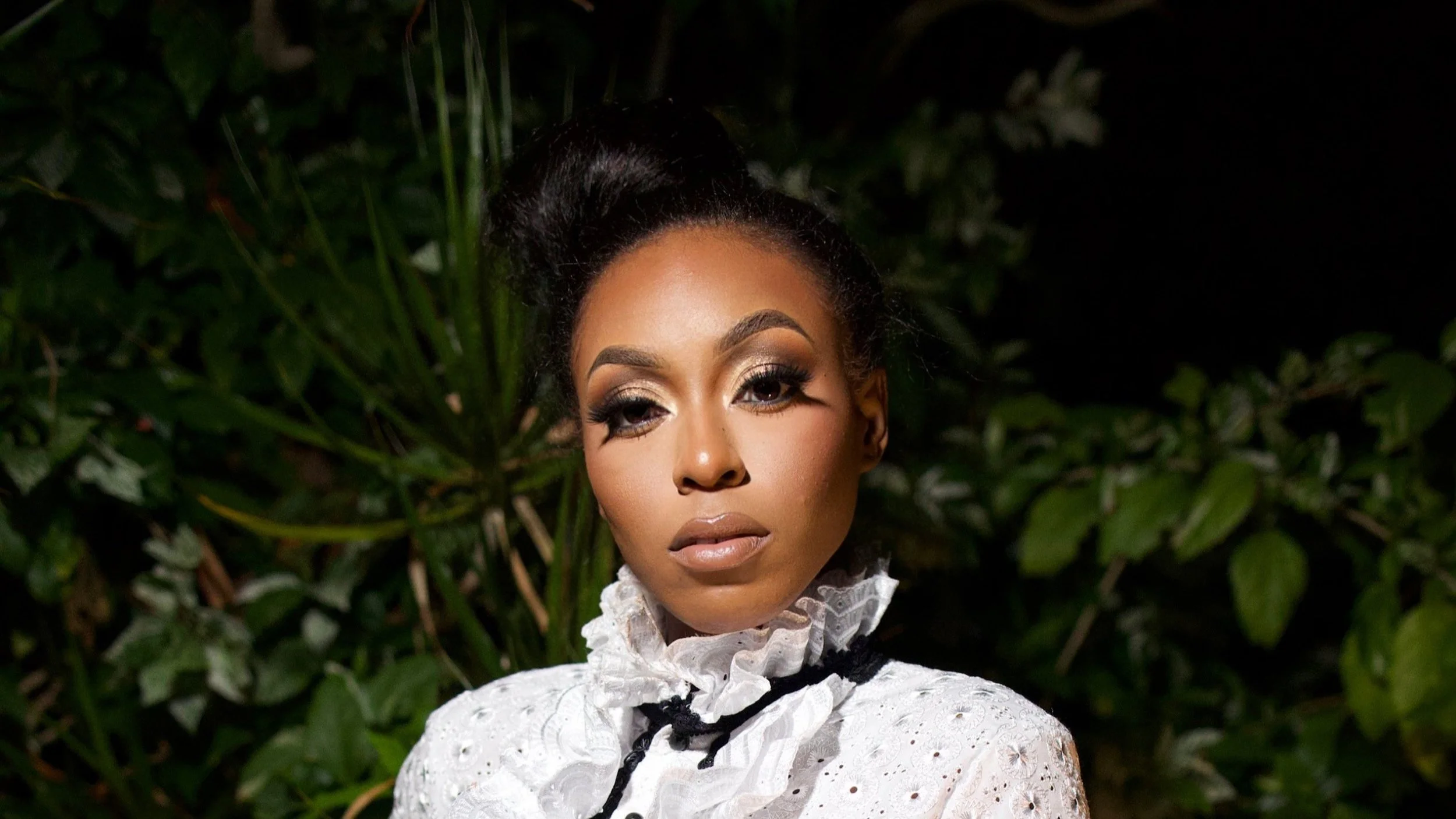Lucid Dreams Amid the Pandemic: Muralist Amrisa Niranjan on her Latest Exhibit at Brooklyn’s Lips Cafe
Photo courtesy of Amrisa Niranjan
written by D’Nisa Joseph
In Brooklyn’s East Flatbush neighborhood conversations over coffee take place amid an art scene. Featured in the Bklyner, Lips Cafe is the neighborhood’s trending spot. More than just a typical cafe, the establishment is a creative space for art lovers and artists. Guyanese-American muralist Amrisa Niranjan is one of a few artists currently on exhibit during the month of May.
We had a chance to chat with Niranjan about this installation which showcases nine of her favorite pieces created throughout the 2020 pandemic. The conversation delved into her creative process and a topic often considered taboo in the Caribbean community —mental health.
Niranjan’s personal struggles with mental health fueled the current exhibit and is one that many can empathize with. According to the Center of Disease Control, 41.5% of Americans had symptoms of anxiety or depressive disorders from August 2020 to February 2021.
“ ...I had about three anxiety attacks the year before (2019). At first, I thought they were heartburn. It seemed so foreign to me —that I’d have physical symptoms from mental health issues. During the pandemic, it worsened. I sought professional help. My stories and public content never discussed this. I didn’t want to seem ‘crazy’ or worse, fulfill what I thought was a lame stereotype of being an artist with mental health struggles. I started to embrace what I used to think was me being crazy’ … I stopped fighting my brain, and started letting it simply be, to see what could happen.”
“What happened was I began lucid dreaming. At times I would have fantastic dreams and at others terrifying nightmares. I would paint. A lot. I started to see it as me letting go of my idea of how I should be, and loving the version of who I was becoming.”
Q & A with Amrisa Niranjan
1. Tell us more about the exhibit. What kind of work will we see showcased?
“I met the owner of Lips Café while doing film work for a mini docuseries. Art Mavens already worked with Lips in curating solo artist exhibitions for the space. After meeting with Lips, I was invited to exhibit my work. The work is very much about self-reflection. The work isn’t ugly, but the experiences that led to its creation often were. You’ll see a transition from black and white work into color, the last piece, Paint Bleed, is the end result of going through the process to express and grapple with a lot of internal struggles.”
2. What inspired your artwork throughout the pandemic in 2020?
“Feeling like I was losing my mind. In the beginning of the pandemic, I was home alone a lot and I couldn’t sleep, nor could I go out and distract myself as I typically did in the past. There was a moment where I had nothing to do but create work. It was the best way, of forgetting the pandemic but somehow the worst way to forget internal thoughts I had pushed aside for years. It really was not inspiring for me, but rather of means of survival.”
3. We noticed a couple of your featured pieces seem to focus femininity and, in some cases, the vulnerability of the subject like Umble Yaself and Kill the Nice Guy. What informed those artistic choice?
“These pieces happen to be feminine because they are self-reflective. There is a lot of vulnerability in each piece, because I myself felt very fragile while creating them. I have a line running through the hands on these paintings. They are meant torepresent a nerve issue I was also facing that was causing my hands to lose strength. Over a year ago, before creating these, I had surgery to move my ulnar nerve (the onein your elbow) to relieve compression and to be able to use my hands and arm more.”
“These pieces are a journey through that recovery, as well as an internal one, from a fragile state. In the last piece, Paint Bleed, the subject is letting herself bleed out whatever was inside. It just happens to be beautiful. Essentially, the parts we might consider lesser, or ugly, are actually just beautiful parts of what make us human. For a time, I would think to myself, I’m feeling pain, and that means I’m not dead yet - so that’s a good thing. And I shouldn’t be ashamed of that. This was the exorcism of a lot of internal issues I had with myself and how I saw myself.”
4. Your bio on the Art Mavens website states “the intent of Niranjan’s art is move away from glamorizing the pain narrative,” yet your most recent work was borne out of mental health struggles. What artistic changes did you willfully make to ensure that you were keeping in line with your mission?
“When I say pain, I mean pain tied to identity around race, colonialism and death. I don’t see mental health struggles, when you’re tackling them, as pain. I see it as triumph to face these struggles. So, I often paint people, living, not specific, so the viewer can see a representation of his or herself while living.”
5. You previously stated that you didn’t find there were many Caribbean millennial artists. Doyou see the community growing? Do you think places like Lips Cafe play a part in growing the Caribbean artist network?
“It is growing. There is no way to deny that. Lips is one space that is part of that growth. It is also connecting with groups outside of the Caribbean. If you’re Indian, you could be Caribbean, if you’re Caribbean, you can be from a multitude of backgrounds. Who is to say where that connection stops? We can connect to other artists via our generation or age, our religions, our language. But there is more than DNA in what stitches us to other humans and other artists.I believe identity is a BIG part of who we each are, and it has ripples of influence on all other parts of who we are, but it is not ALL we are. I think it can hold you back, if you let it. It really depends on what you want to say.”
“If your only message is around identity, there is nothing wrong with going full force to express that. But, I don’t think we should limit our expression to our ethnic identity, if we have other items to express.”
6. Are there enough platforms that support West Indian artists?
“No. But I firmly believe there will be, because I am watching it happen. At times it may feel like you’re alone in trying to create or build a platform for your work, and for others like you. Often, there are many like you, you just haven’t met them yet. I work on my art and move forward with full confidence that there are many artists like me, and many spaces waiting to share work like mine, but that they are simply growing as I am, and I will soon find them.”
7. Tell us about the skateboards. Why did you decide to design them? What’s the significance of the sign language?
“I really liked the idea of working with wood. Aside from the painted work you see at the end, these were used skateboards that had a life before becoming art. I liked the idea of stripping them down to their core, which was wood and creating something new. Making them more than a tool for skating. I have a brother who has autism. He communicates differently and how he understands others and is understood by them is a different process.”
“By using sign language, I was forcing anyone who wanted to engage in the conversation of what the piece said, to have to do a bit more work to participate. For me it’s an an exercise to have the viewer experience doing extra work to engage and they do.”
8. Do you think artistry loses its touch in going virtual?
“Yes. I like to look at work up-close. Half of the experience for me is watching and experiencing art near others. Something about that gets lost virtually, but we all communicate in comments and threads, and that’s still valuable. For me, I like to see art in person. I had very little interest in virtual art experiences. It felt watered down, and I am still looking forward to a new normal, where we can experience art collectively and physically together again.”
Like Niranjan, many hope to be able to experience art physically again. Niranjan’s work reflects a human experience influenced by the pandemic translated on canvas. To see Niranan’s work visit Lips Cafe located at 1412 Nostrand Ave. Brooklyn, NY 11226.





